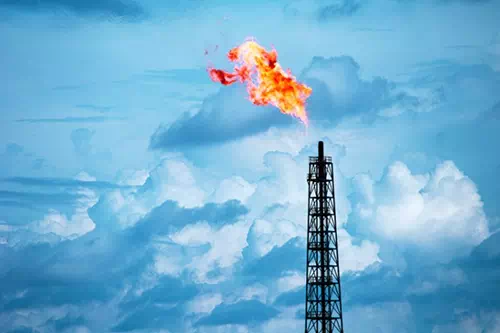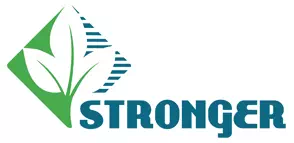

|
Clean Air Act Overview
The Clean Air Act (CAA) is the law that defines EPA's responsibilities for protecting and improving the nation's air quality and the stratospheric ozone layer. The last major change in the law, the Clean Air Act Amendments of 1990, was enacted by Congress in 1990. Due the complex nature of the CAA, it is important first to understand the terminology used throughout its various sections or "Titles". This will be followed by an overview of the CAA Titles most applicable to Crude oil and natural gas Extraction, Production and Processing. Different legal requirements apply to different types of pollutant sources. Stationary Sources such as factories, oil/gas extraction facilities, refineries, and power plants, are regulated differently from Mobile Sources such as cars, trucks, and buses. Still other requirements apply to Indoor Sources such as building materials and cleaning solvents. The focus of this discussion will be on Stationary Sources. States, local, and tribal agencies implement the CAA requirements according to jurisdiction mainly thru permitting and other programs authorized under S/L/T regulations approved by the EPA. The EPA may act as the permitting authority in other jurisdictions or if an approved program is absent. To comply with the CAA requirements for Stationary Sources, you may need to know whether your operation is a "Major" or "Minor" Source of air emissions. Major Sources must obtain a permits for construction and operation and are also subject to more stringent source category requirements than Minor Sources (see below). Depending on the CAA program being considered, definition of a Major and Minor Source may be different and have differing thresholds to meet. To determine whether your business is considered a Major or a Minor Source, you will need to determine its maximum capacity to emit a pollutant or “Potential to Emit.” Another term used in implementing the CAA, is the term “affected facility.” In general terms, the affected facility is the apparatus (in the case of the NSPS) or the collection of equipment, activities or both (in the case of the NESHAP) to which the standard applies. Each specific subpart promulgated under Section 111 or Section 112 will identify the “affected facility.” Criteria Pollutants are generated during crude oil and natural gas extraction, production and processing. For example, VOC emissions from gas wells, storage vessels and pneumatic controls contribute to the formation of ground level ozone. Gas processing plants may emit sulfur dioxide. EPA develops National Ambient Air Quality Standards (NAAQSs) to limit levels of the Criteria Pollutants. Geographic areas that meet NAAQSs for a given pollutant are designated as Attainment Areas; those that do not meet NAAQSs are designated as Non-attainment Areas. A state will develop a State Implementation Plan (SIP) to implement and enforce the NAAQS for all areas of their state and include a specific plan to attain and maintain the standards for areas designated as a Non-attainment Area. SIP regulations include enforceable control measures and procedures for preconstruction review of new or modified sources, among other elements. State Implementation Plans (SIP) When EPA establishes a new NAAQS or revises an existing NAAQS, it sets in motion a series of actions aimed at ensuring that air quality throughout the country meets those standards. EPA must designate areas as meeting (attainment) or not meeting (nonattainment) the standard. The CAA requires states to develop a general air quality plan to implement and enforce the NAAQS standards in all areas of the country and a specific plan to attain and maintain the standards for each area designated nonattainment for a NAAQS. These plans, known as State Implementation Plans or SIPs, are developed by state and local air quality management agencies and submitted to EPA for approval. Once the SIPs regulations are approved they are codified as EPA rules and become enforceable by EPA in addition to state enforceable. A tribe may also develop an air quality plan, called a TIP, but is not required to do so. EPA is required to develop a Federal Implementation Plan or FIP if a state fails to submit an implementation plan, or if the plan does not fully comply with the NAAQS. EPA may also develop a FIP for tribal lands if a tribe elects not to develop their own implementation plan, as appropriate. The SIPs serve two main purposes: (1) to demonstrate that the state has the basic air quality management program components in place to implement and enforce a new or revised NAAQS; and (2) to identify the emissions control requirements the state will rely upon to attain and/or maintain the primary and secondary NAAQS. Each state’s SIP must contain a number of elements required by the CAA and must be developed and adopted through a process allowing public input. Once adopted by the state, each required SIP element must be submitted to EPA for review. The SIPs are designed to prevent air quality deterioration for areas that are in attainment with the NAAQS and to reduce common or criteria pollutants emitted in nonattainment areas to levels that will achieve compliance with the NAAQS. As the NAAQS change, states must submit revisions to the SIP to demonstrate attainment and maintenance of those new or revised NAAQS and to meet other statutory requirements. The status of a SIP may be found here. Major new stationary sources of air pollution and major modifications to major stationary sources must Major new stationary sources of air pollution and major modifications to major stationary sources must obtain air pollution permits before beginning construction through process called New Source Review (NSR). NSR permits are typically issues by state or local air pollution agencies under their approved State Implementation Plans (SIP) or they may be delegated the authority to issue permits on behalf of the EPA. NSR applies to proposed projects that are sufficiently large (in terms of emissions). NSR includes two permitting programs for major sources: prevention of significant deterioration (PSD) and non-attainment major NSR (NNSR). Minor NSR covers procedures for minor source construction. NSR procedures ensure that specific federal requirements are met for permit issuance, but generally minor and major NSR permits will include all CAA requirements applicable to the new or modified source. New major sources and major modifications in attainment areas, where national ambient air quality standards (NAAQS) have been met, and in unclassifiable areas, are required to follow PSD rules. This means that they must obtain a pre-construction permit, demonstrate that the construction will not increase emissions above an amount that threatens the achievement of air quality goals, and ensure the installation of the best available control technology (BACT) for each pollutant subject to NSR. In nonattainment areas, where the NAAQS have not been met, new and modified sources are required to obtain pre-construction permits to offset emissions increases with emissions reductions from other sources in the area and to meet the lowest achievable emissions rate (LAER). New Source Performance Standards Under Section 111 of the CAA, New Source Performance Standards (“Section 111”/40 CFR Part 60) are developed for criteria pollutant. Section 111 standards are nationally uniform emission standards for new and modified major and minor stationary sources falling within particular source categories, including crude oil and natural gas facilities. The emission controls required under a major NSR permitare developed for and apply to a specific stationary source, whereas the NSPS performance requirements apply to all sources within the category nationwide. Operating Permits Issued under Title V of the Clean Air Act Major sources of air pollutants, and certain other sources (e.g. section 129 sources) must obtain a title V operating permit (operating permit), operate in compliance with the permit terms and certify continuous compliance with the permit at least annually. Non-major sources subject to CAA section 111 (New Source Performance Standards) and 112 (standards applicable to Hazardous Air Pollutants) may be subject to permitting unless the EPA exempted them from the program when issuing the standards. The operating permit for a major source must contain all applicable CAA requirements and terms and conditions necessary to ensure compliance with the permit terms. Most states, certain local agencies and one tribe have approved part 70 operating permit programs. The EPA administers the part 71 federal operating permit program in most areas of Indian Country (one tribe has been delegated implementation authority) and on the Outer Continental Shelf (where there is no state permitting authority). States with an approved operating permit program have generally also been delegated the authority to implement section 111 and 112 requirements. Hazardous Air Pollutants (“Section 112”/ 40 CFR Part 63) Crude oil and natural gas facilities may release HAPs during operations, for example, from equipment leaks, when materials are transferred from one location to another, or during discharge through emission stacks or vents. EPA develops Maximum Achievable Control Technology (MACT) standards for controlling the emissions of HAPs at major sources under Section 112 of the CAA. These standards are based on emissions control that is achieved in practice by the best controlled similar source. For area sources of HAPs, EPA may establish Generally Available Control Technology (GACT) standards in lieu of MACT. GACT standards generally are less stringent than MACT standards. In setting MACT standards EPA establishes the maximum degree of reduction in emissions, taking into consideration the cost of achieving such emissions reduction, and any non-air quality health and environmental impacts and energy requirements. The standards are achieved through application of measures, processes, methods, system or techniques. To determine if a CAA requirement for major sources applies to your business, you will need to calculate its maximum capacity to emit a pollutant using the definition of “potential to emit” for the specific program. The source status may vary depending on the context or applicable program:
If a facility is considered a Minor Source, it may not have to meet certain requirements, or may have requirements that are easier to meet than those for Major Sources. For sources subject to section 112, under a previous policy, a facility classified as a Major Source, could not be reclassified as a Minor Source, once the compliance date for the major source standard had passed. On January 25, 2018, EPA issued a guidance memorandum withdrawing the “once in always in” policy for the classification of major sources of hazardous air pollutants under section 112 of the Clean Air Act. EPA’s current interpretation based on the plain language of the section 112 definitions of major and area source provides that sources of hazardous air pollutants previously classified as “major sources” may be reclassified as “area” sources at any time, provided the facility adopts enforceable limits on its potential to emit below major source thresholds. The EPA plans to issue implementing regulations to codify the new policy. To determine whether your facility is a Major or Minor Source of emissions, the Potential to Emit (PTE) of certain air pollutants must be determined. PTE is defined in various EPA regulations as the maximum capacity of a stationary source to emit a pollutant under its physical and operational design considering enforceable controls. When determining the PTE, the facility takes into account any physical or operational limitation on the capacity of the source to emit a pollutant, including air pollution control equipment and restrictions on hours of operation or on the type or amount of fuel combusted, stored or processed provided the limitation or control is practicably enforceable. Also, some sources may have inherent limitations that reduce their maximum capacity to emit a pollutant. For details see 40 CFR Sections 52.21(b) (4), 51.165(a) (1) (iii), 51.166(b) (4). Please visit the state pages for resources to determine PTE: For Section 112, Major Sources have the potential to emit:
Minor Sources (also called Area Sources under section 112 for hazardous air pollutants) are any sources that do not meet the criteria to be classed a Major Source under a CAA program. For Criteria Pollutants, applicability of the PSD preconstruction program to new major stationary sources and major modifications are defined as follows:
The CAA General Duty Clause (GDC), CAA § 112(r)(1), owners and operators of stationary sources to identify hazards that may result from accidental releases, to design and maintain a safe facility, and to minimize the consequences of releases when they occur. The GDC applies to owners and operators of all stationary sources which produce, process, handle or store any “extremely hazardous substances.” There is no specific list of substances which subject a stationary source owner or operator to the GDC provisions. Chemical Accident Prevention (“Risk Management Plan/RMP”) CAA § 112(r)(7) and 40 C.F.R. Part 68, the Chemical Accident Prevention Provisions, require owners or operators of stationary sources to develop a risk management program to prevent or minimize accidental releases of substances found at 40 C.F.R. § 68.130. This program may be used in conjunction with CERCLA and EPCRA. CAA § 303 is an emergency power which allows EPA to issue an order requiring abatement of pollution that is found to be causing an imminent and substantial endangerment to human health or the environment from the emission of air pollutants.
|
Funded by EPA through a Cooperative Agreement
|
 |
||
About | Technical Topics | Federal Statutes & Regulations - US EPA | Federal Statutes & Regulations - Non-EPA | Emergency Response |
|
EPA Resources | State/Local Resources | Other Resources | Acronyms | Search | Disclaimer | Home



